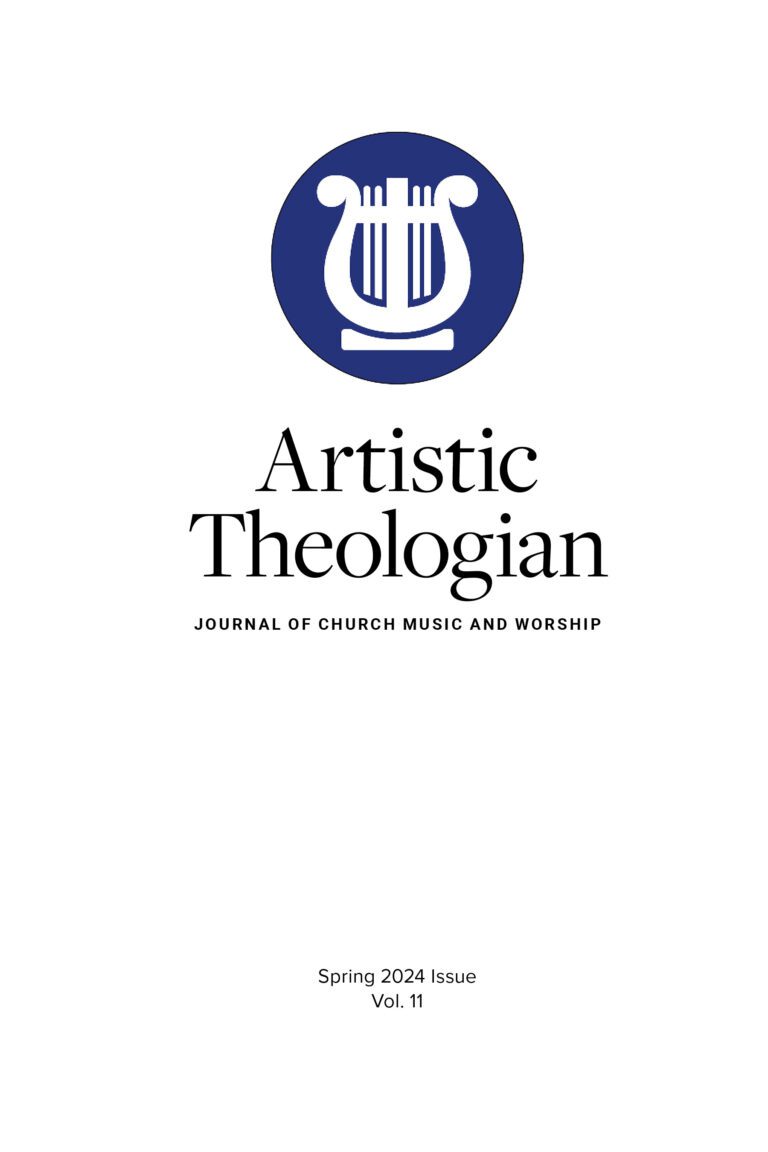
The Relationship of Doxology and Doctrine
Artistic Theologian
Volume 11, Summer 2024
Editor: Joshua A. Waggener
Taylor, W. David O. A Body of Praise: Understanding the Role of Our Physical Bodies in Worship. Grand Rapids, MI: Baker Academic, 2023. 224 PP. $19.59.
“Hear, O Israel! The Lord our God, the Lord is One. And you shall love the Lord your God with all your heart and with all your soul and with all your mind and with all your strength” (Mark 12:29–30, ESV). In A Body of Praise: Understanding the Role of Our Physical Bodies in Worship, W. David O. Taylor (associate professor of theology and culture at Fuller Theological Seminary) delves into the “strength” portion of the Great Commandment. Taylor explores historically, biblically, and theologically how Christians should understand their bodies and how we should employ them in our worship—especially within the gathered assembly of corporate worship.
Using a story from the 2020 COVID-19 lockdowns comparing the “soul-only worship” experienced through live-streamed services with the human need to “gather in our bodies in a common physical space in order to worship God together,” Taylor presents his thesis: “Our bodily participation in worship is essential not just to faithful worship but also to a fullness and richness of corporate life” (3–4). Taylor continues to elaborate on his thesis as he describes how God created humans to flourish as we gather to worship “in our good bodies alongside the bodies of others as Christ’s own Body” (4).
Taylor writes that his book is “about the unique glory of the physical body in corporate worship” (4). Chapter 2 begins the first part of Taylor’s argument, pushing back against “a widespread presumption that our bodies are neutral or passive agents in corporate worship” (4). In chapter 3, Taylor elegantly recounts the significance for the body in the early centuries of the church. He explains how, in opposition to body-denying pagan claims of the time, Christians believed that the body mattered because Jesus Christ had taken on human flesh and retained that flesh in his resurrected humanity (30). In chapters 4, 5, and 6, Taylor reveals his biblical and theological arguments, which rely heavily on his understanding of the concept of imago Dei. Taylor agrees with biblical scholars who have determined that “the corporeal dimension of the divine image is far more central to our humanity than had been thought possible or desirable by previous generations of theologians” (46). Taylor writes that human beings do not simply “have the image of God inside them” as qualities of personality, rather, that humans “are God’s image from head to toe and inside out” (47).
As Taylor focuses his argument in chapter 5 on Scripture’s mandate for embodied worship he ties his argument back to his initial thesis: “(1) that we must worship God with our bodies, (2) that we need to worship God with our bodies, and (3) that we get to worship God with our bodies” (5). Demonstrating the biblical veracity of his argument in chapters 4–6, Taylor employs a wide spectrum of Scripture from the Creation account to the Psalms to the New Testament Epistles, and finally to Jesus’ ministry recorded in the Gospels. Facing the weight of Scripture’s witness, Taylor asserts that “our physical bodies are a ‘joint work of Christ and the Spirit’” and as such, they “do not diminish corporate worship, nor do they endanger ‘acceptable’ worship of God. Instead, they ably serve the good purposes of God in the public praise of God, as a portrait of God’s glory in and through our physical lives” (65).
As a seasoned and thoughtful theologian, chapters 7–9 excellently reflect the epiphanies from Taylor’s study, including a discussion of what is perhaps the most underestimated physical sense in evangelical worship: smell. As he conveys the story of the bonding process between he, his wife, and their adopted infant son, Taylor beautifully connects qualities of our human experience to the figurative use of smell language in the Bible (81–87).
Taylor’s most likely miscue comes from his discussion of the differences between sign, symbol, and sacrament (18–20). Taylor clearly explains his intent and use of “sacrament.” In doing so, Taylor attempts to distinguish his understanding from the soteriological meanings employed by other traditions (19–20). Despite Taylor’s efforts, I fear many readers may be more likely to become defensive towards the words “sacrament” and “sacramental” rather than accept Taylor’s argument for embodied worship. Why not simply avoid these words?
With thoroughness and gentility, Taylor’s A Body of Praise presents an understanding of the role our physical bodies have in corporate worship. Taylor correctly identifies that many evangelicals struggle with what to do with their bodies in worship and is right when he calls on evangelical churches to correct their understanding concerning the importance of the body in worship. Although Taylor describes ways to engage our physical bodies in worship that could press against the sensibilities of some, this book gives all readers much from which they may benefit. Deftly surveying Scripture and the history of Christian worship, Taylor’s book can help all worshipers better understand how they may respond to God’s Word through use of their body’s actions and postures in corporate worship.





